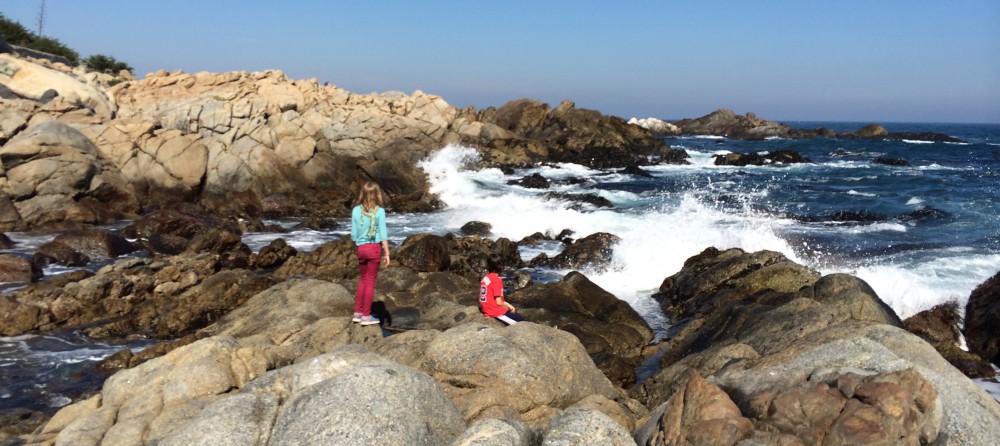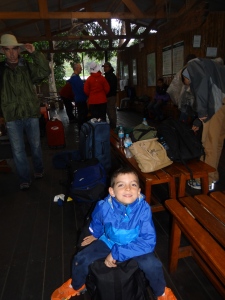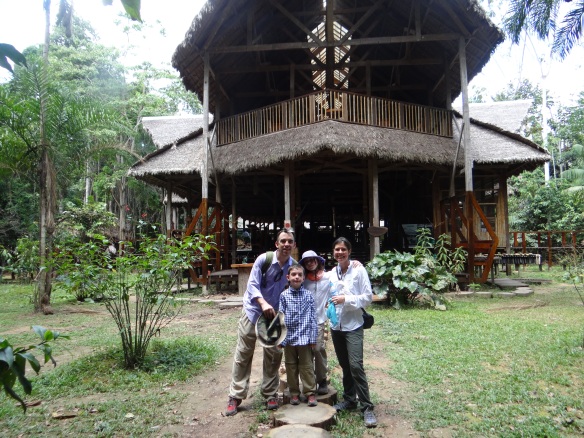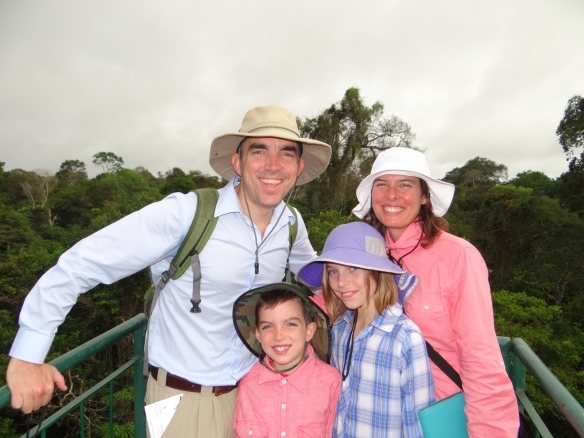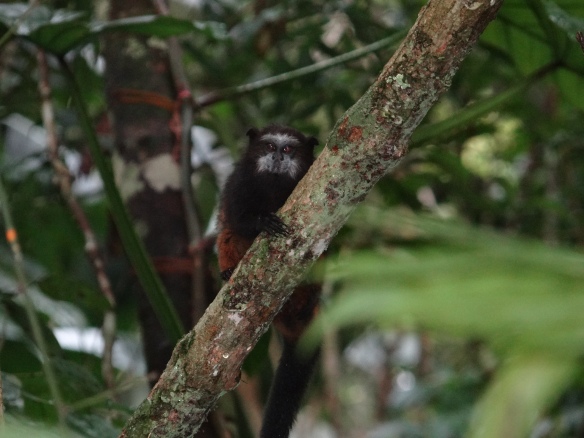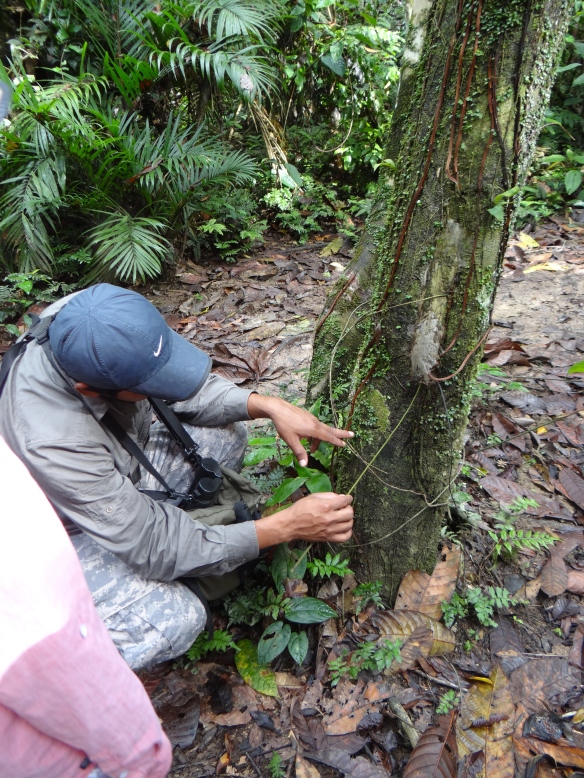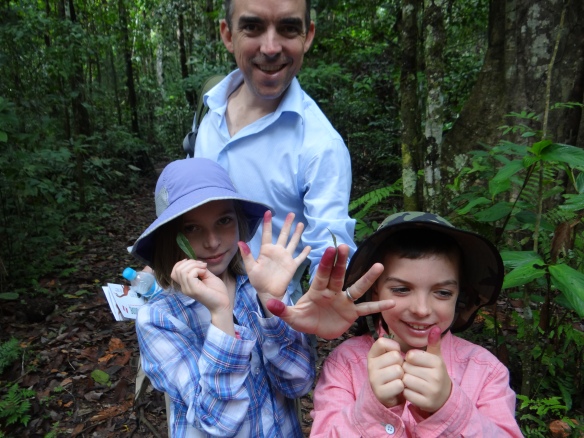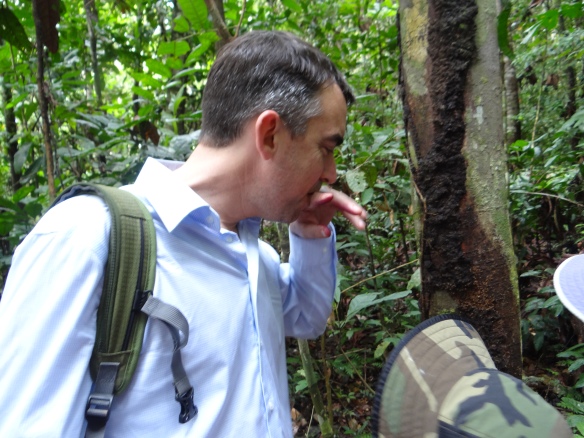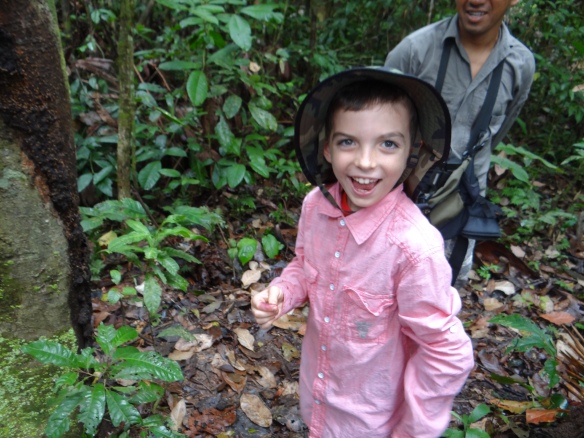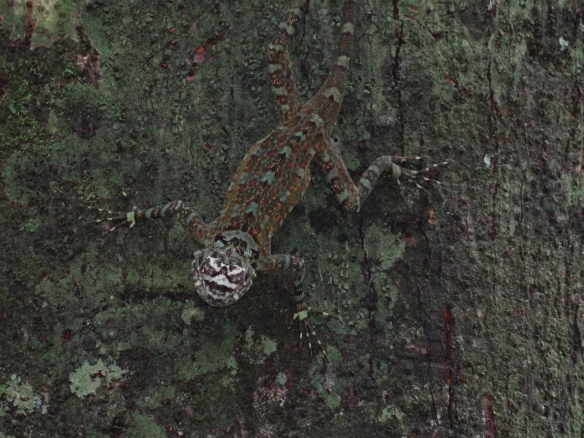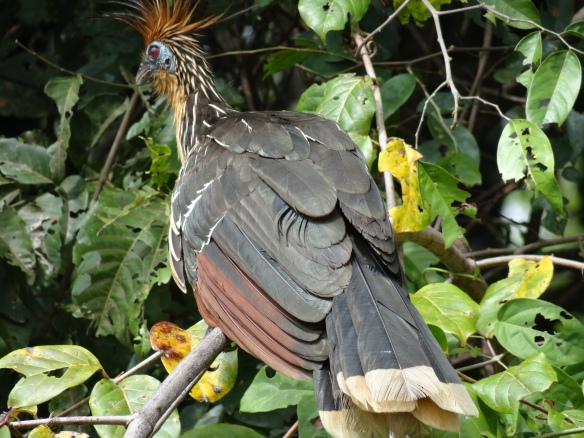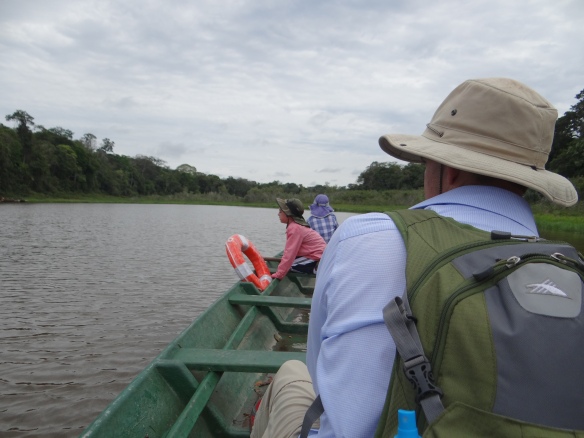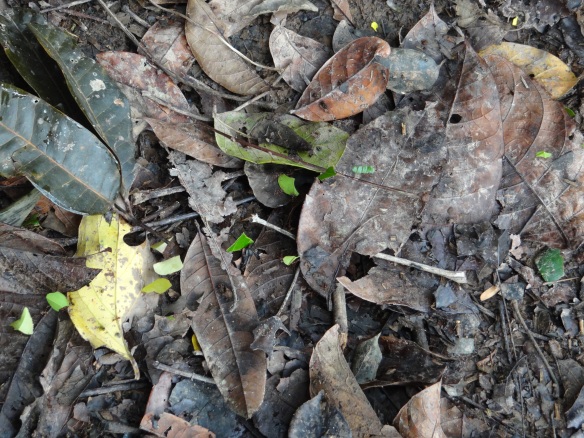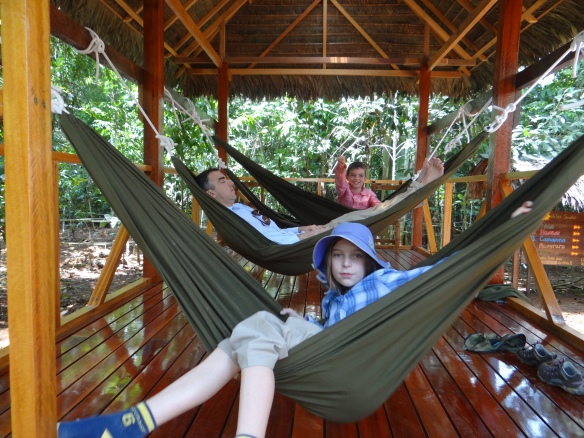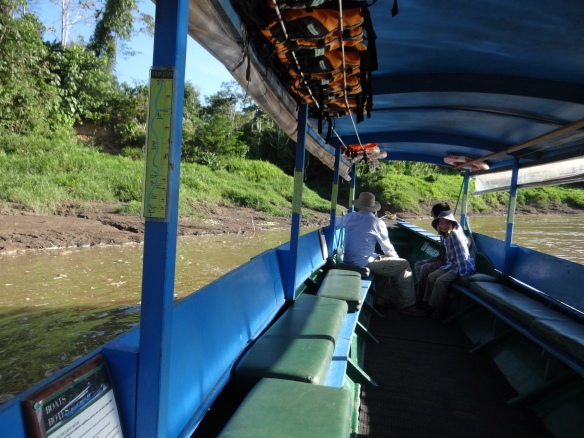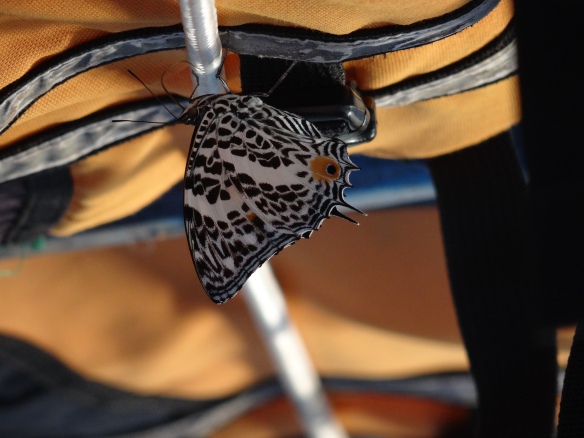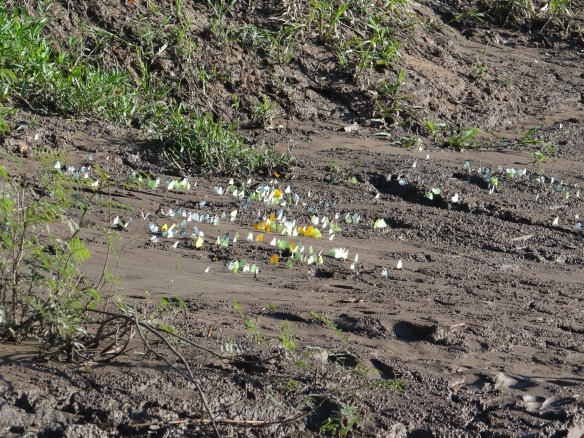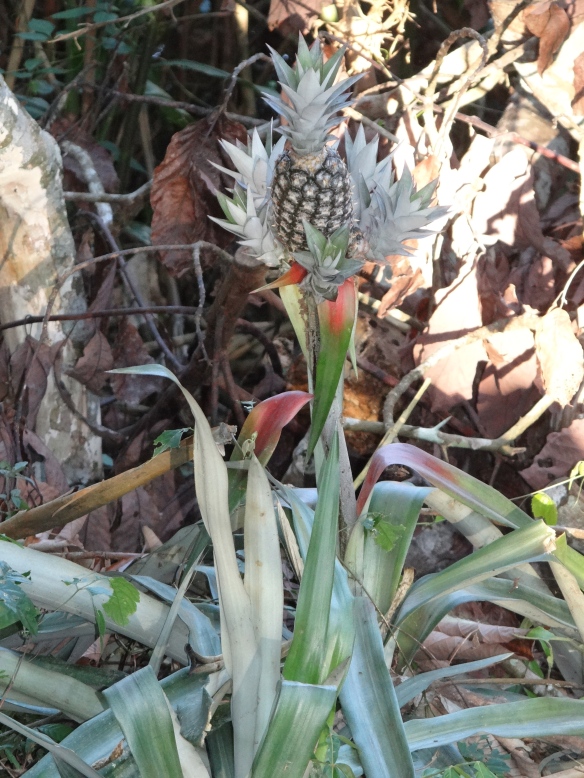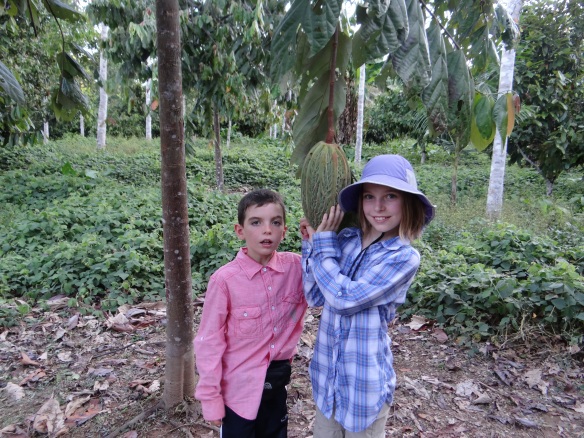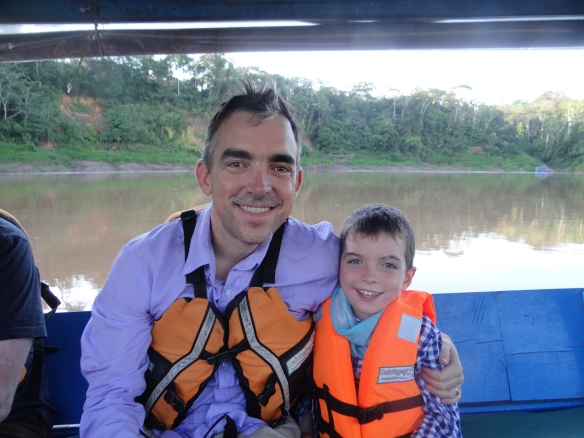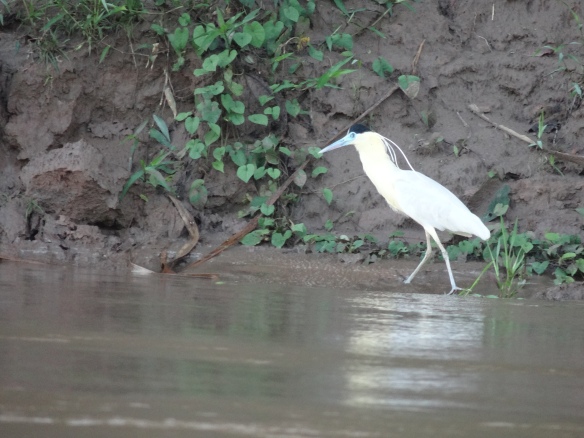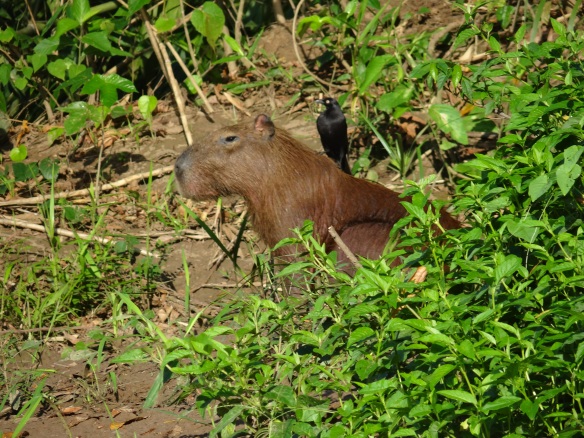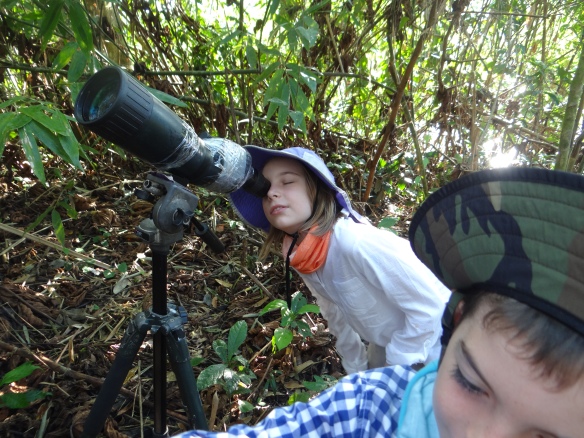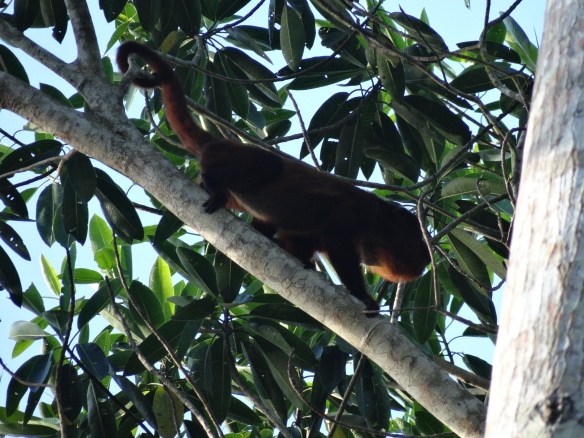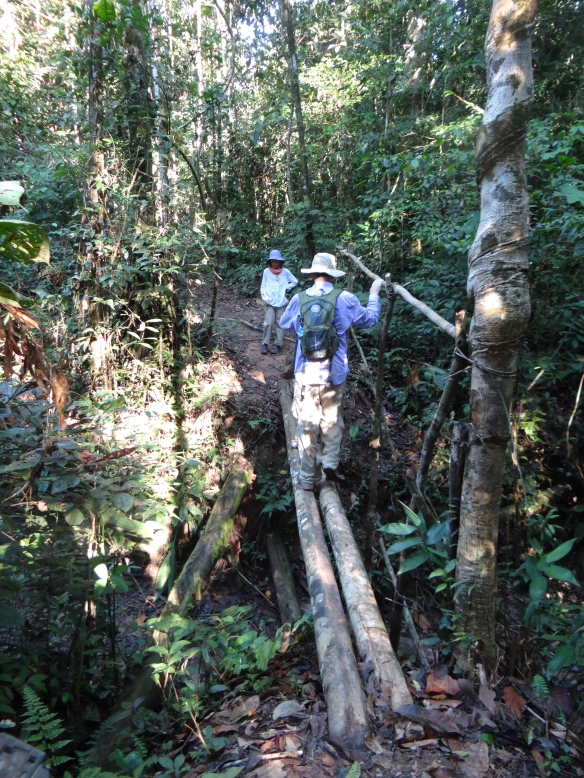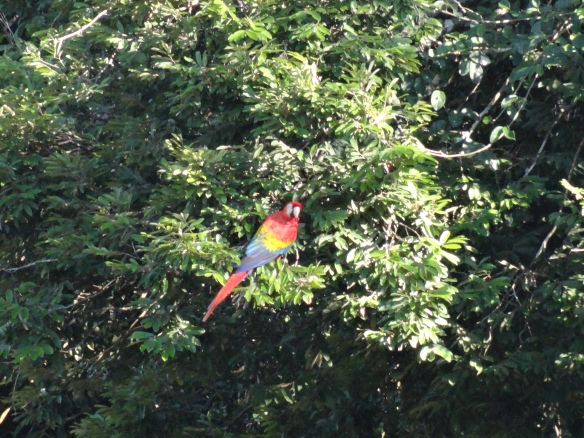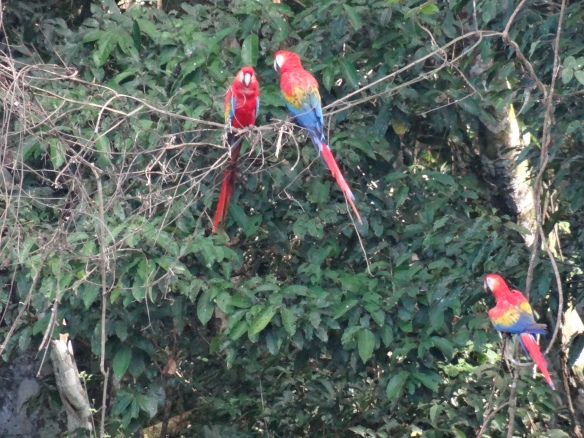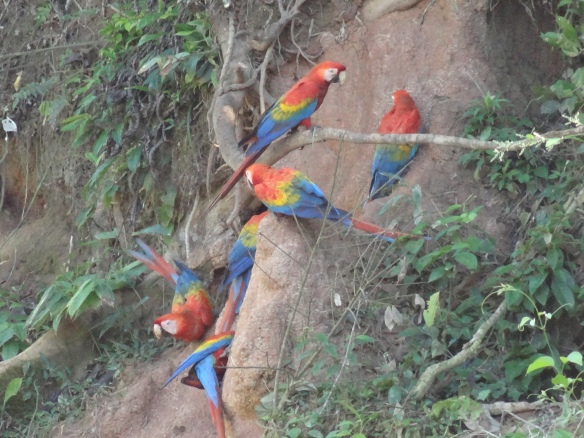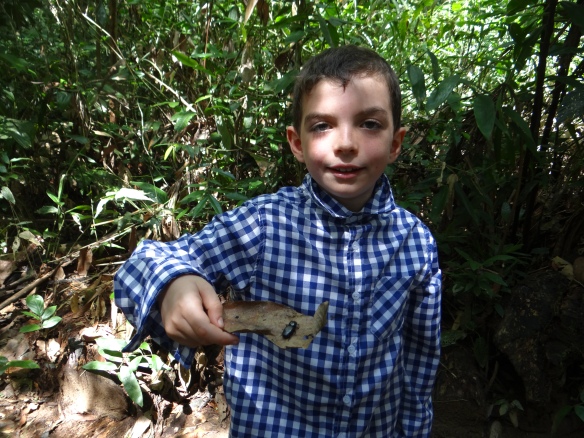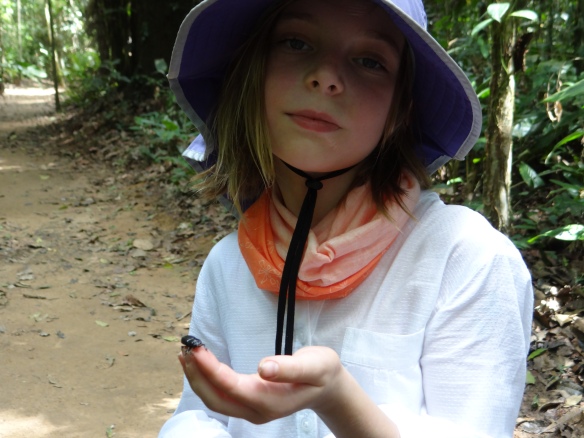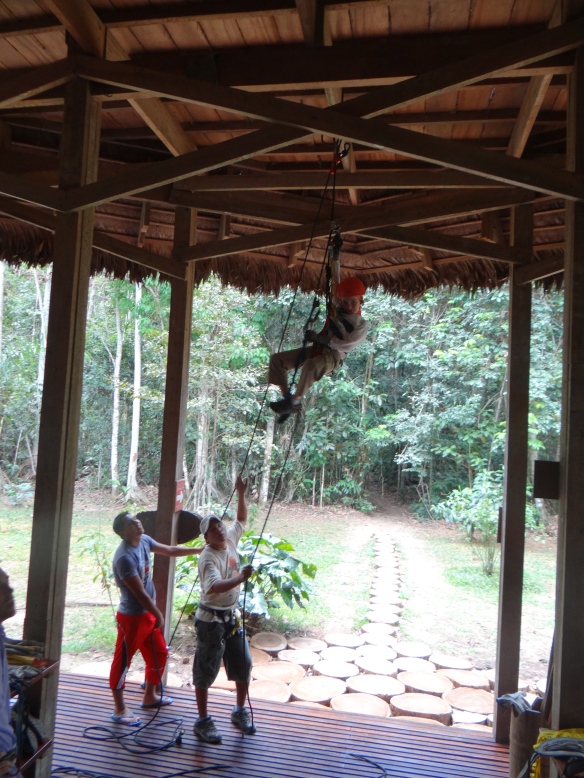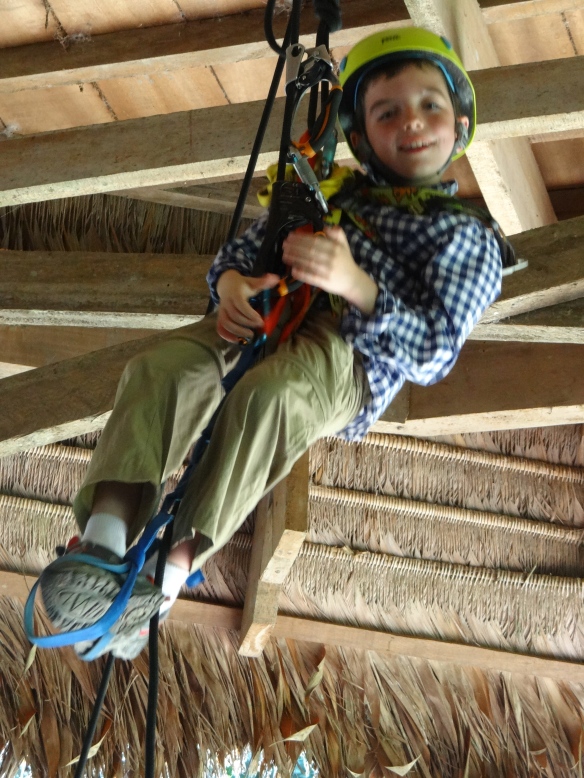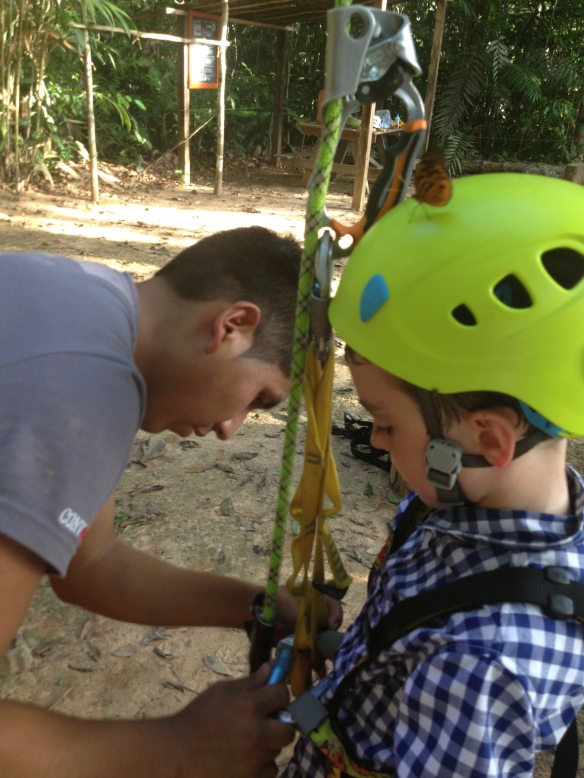This year for the Chilean holiday of Dieciocho we decided to head to Peru. Kids get a week off from school and it is still the dry season in the Rainforest. As we try and hit all of the highlights in South America, the Rainforest was sure to be on the top of the list.
We flew to Lima from Santiago (3.5 hour flight) and stayed the night in Lima. I had been so excited to visit Lima. It is one of the foodie hotspots on the globe at the moment. So much exciting cusine happening and we are fortunate to have friends who just moved to Lima. Our plan was to go out to a great restaurant and let the kids hang out at home with their nana.
As we landed in Lima, we saw the blue sky vanish when we got low enough to the ground only to be surrounded by a brown haze. Once on the ground, the chaos of rush hour in Lima was nerve-racking. There were moments when we were hurling down the road with no regard for any traffic laws, lines or other drivers followed quickly by abrupt stops and creeping at a snails pace through incredible congestion. Because of the traffic, it took us more than an hour to reach our hotel.
Beautiful is not the first word I would use to describe this city. But, our dinner at Pescados Capitales was phenomenal. Talking to our friends, the food scene in Lima really is all that people say it is and more. It was just sad to have only one night.
The next morning we headed out to Puerto Moldanado. The flight would land in Cusco but continue on to the small town in the heart of the Amazon River Basin.
Our captan on the flight admitted that the rain was so bad he would only be able to make one attempt at landing and we would likely have to return to Cusco. By the grace of god his one attempt worked and we landed into a total downpour of rain. We got on a bus and headed to the Rainforest Expeditions main office in town. Since we would be traveling down the river in boats which resembled large canoes with roofs you could only bring a few small bags. We had to unload our other gear at the office and pick it up after we returned. We got out our rain gear, flashlights, etc. and got back on the bus to head to the river bank.
The rain was coming down in buckets. We were completely ill-prepared. We had on tennis shoes and jeans. Big mistake. There was a relatively high bank of the river that we had to traverse to get down to the boats and the river bank was complete mud with no steps of any kind. While the rain made getting to the boats nearly impossible without sliding down, there did not seem to be a back up plan. One by one we tried to make it carefully down the bank and one by one, we slid in the mud and pouring rain to the bottom. Now, absolutely covered in mud, wet and cold, we got to take the 4.5 hour boat ride to the lodge. According to our guide, they typically cut the trip time down by taking the first part of the journey by road, but the road had washed out so we would do all 4 hours by boat – the last hour in total darkness because we had landed late and night was drawing near.
It was absolutely the longest 4.5 hours. The kids were losing it entirely. There was really nothing to do but sit and think and Madie had seen a giant wall-sized poster in the airport warning visitors of Dange Fever so she just worried the whole way about the family coming down with this crazy jungle disease. I was also full of dread given that the last hour we relied on one of the guides holding up a strong flashlight off the front of the boat trying to point out any big rockes, river banks and turns of the river. The river is incredibly shallow at many parts so I just imagined us getting stuck knowing that pirranah were an abundant species in this part of the world.
We finally made it safely to the lodge. We had to take our our flashlights and hike about half of a mile through complete darkness to reach the main lodge. The sounds in the jungle are almost overwhelming. It seems as loud as New York City but with each sound being some animal marking its territory, calling its friends or courting a significant other.
There is no electricity. They have some electricity in the main lodge for a few hours each evening but none in the rooms. They have candles and gas lamps for the main part of the evening. Rooms are completely open – each bed has a mosquito net they put down in the evenings but you are totally open to the jungle. We were completely off the grid.
Rainforest Expeditions is the company we worked with to plan our trip They run three lodges in the Amazon Basin. We were staying in Refugio Amazonas the lodge which is the more family-oriented option and mid-range distance from the main town of Puerto Moldonado. They have a lodge much closer to town and another four hours from our lodge (so more than 8 hours up the river) and noted as one of the most remote lodges in South America.
The Refugio Amazonas lodge was very basic – a main area where we ate all of our meals at group tables, they hosted lectures each night and had a fun simple bar where people gathered for cocktails and drinks. This was also the place they turned power on for a few hours each day in order to charge cameras, etc.
Our guide Carlos was amazing and he led just our family the whole trip. He spoke English and Spanish but we tried to stick to spanish. Our first morning our plan was to climb up the canopy, a platform that was at the top of a giant staircase that took you above the tree canopy. From the top, Carlos used his iphone to make bird and monkey calls. We could see toucans, macaws, parrots. Really amazing. 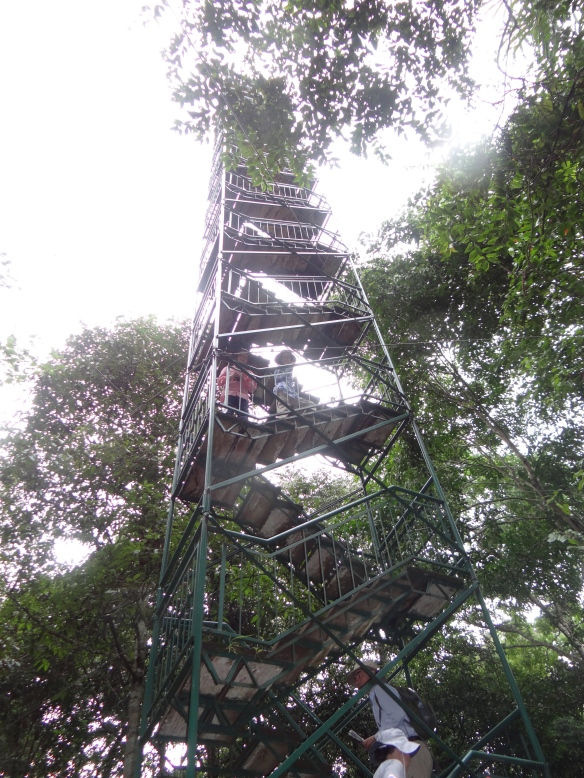
We then hiked a few miles to the Oxbow lake and on the way came across so many amazing things. What at first appeared to be a thin feather boa on the ground turned out to be a group of caterpillars. The caterpillars produced a pheremone that attracted others and they all travled together in this long line one right after another. 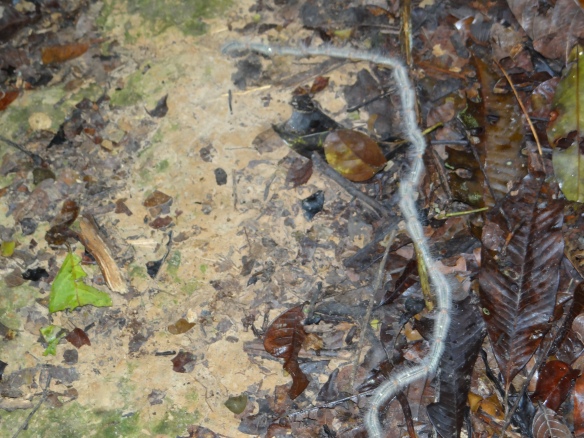
We found a family of Tamarin Monkeys who came to see what we were up to.
Carlos showed us a tarantula nest on the side of a tree. He took a small branch to touch the outside to see if the spider was home but it was not.
We learned about a few of the more than 20,000 plant species that occur in the rainforests of southeastern Peru. Many are used by locals for medicinal purposes, art, cermonies or food. We found these great leaves that when crushed gave off a great red coloring used by many for decorative things.
We saw many termite mounds including those built on tree trunks. Carlos explained that locals like to eat termites so John, Madie and Jack were brave enough to try them.
So many interesting animals. Nowhere else on the planet exists a forest that has more than 600 species of birds, well over 100 species of mammals and more than 100 species of reptiles and amphibians.
When we reached the Oxbow lake we boarded a small kayak to explore. This Oxbow lake formed when a bend in the river got cut off from its main channel. The lake is very quiet and tranquil creating a habitat for marsh grasses and many interesting animals that live in these backwater lagoons.
First off was the Hoatzin, a bird that is a cross between a pheasant and a feathered dinosaur, they live right around the edge of the water and make odd grunting noises. The locals call it a “Stink bird” because of the bad odor it gives off.
We were on the lookout for Black Caimans and giant Anacondas. Thankfully we didn’t come across either that day.
We did find a family of bats that were sleeping on the underside of a tree log.
We also saw amazing dragonflies.
As we parked out boat on the other side of the river we ventured out to see one of the largest trees in the rainforest – the Kapok.
Finally as we got back to the other side of the river we came across a group of leafcutter ants. We watched as this incredibly long procession of ants, each carrying a small cut of leaf, walked diligently quite a distance to their nest. We learned that they don’t use the leaves for food but instead, they chew up the leaves, spit them out and eat the fungus that grows. Almost every insect or animal had an fascinating story.
Since most of the activities would begin very early in the morning, we would arrive back at the main lodge an hour or two before lunch and have the chance to relax.
After lunch we took a boat across the Tambopata River to explore a working local farm which grows a huge variety of fruits and vegetables. On the way to the farm we came across what appeared to be a butterfly clay lick. There are more than 1000 species of butterflies in the rainforest of Tambopata.
The owner of the farm showed us all the crops he manages including so many things we had never heard of. We also saw monkeys and heard macaws fly overhead.
Each night we would gather in the main lodge and eat dinner with our guide. This was not your typical hotel buffet. The food was very simple peruvian food as if you were a guest in someone’s home. Since I don’t eat meat, I had a very strange version of tofu patty dressed in a different sauce each night. Kids didn’t see anything they recognized at any meal.
The second day we woke up early and headed to the macaw clay lick. We took a short boat ride followed by an hour-long hike through the rainforest to a clay lick for macaws.
A few miles up stream we saw what looked like a White Heron but looking closely he had this vibrant blue head and baby blue beak. He is the Capped Heron.
When we got to the area of the river bank where we would start our hour-long hike through the jungle, we were greeted by a Capibara which is the world’s largest rodent weighing as much as 100 pounds.
After just a few minutes of walking our guide spotted a red howler monkey sleeping in a tree. We watched him for a while until he moved on in the tree canopy.
Just a few steps later our guide spotted a Tarantula nest. The guide had us gather around this large hole that looked like a giant burrow bigger than a rabbit. It was home to the second largest spider in the world – Araña Pollito – or chicken spider. As we all stood around this giant burrow, we were told to be very still and completely quiet since the spider can sense vibrations. Our guide took a tree branch and slowly moved it into the hole. As he pulled it back out, this giant spider the size of a dinner plate followed. Knowing we had to remain perfectly quiet, I put my hand over Madie’s mouth because I knew she was going to scream. As I looked over I saw tears coming down her cheeks. It was the most insane animal I have ever seen in the wild by far. I’m just sorry our photos don’t provide any perspective on how big he actually was.
Here was a red-necked woodpecker.
When we finally made it to the Macaw clay lick we were asked to stay behind a covered grass hut that had small holes poked out where you could view the clay lick. We were so fortunate because our guide says it is very difficult to know if the Macaws will visit one day or not. We saw more that we could count. It was amazing. We sat and watched them for an hour and then slowly they started to fly away in pairs (Macaws mate for life) or small groups until all the birds had left the Clay Lick. I found this great video someone produced about the Macaws in the Tambopata National Reserve.
As we made our way back to the boat we came across many smaller creatures including this crying beetle, which gets its name because it makes a high-pitched whiny cry when it is disturbed.
On our last afternoon we decided to do a canopy climb. We were thinking it would be a zipline experience through the tree canopy. We discovered when we went to the training that we would have to lift ourselves 30 meters up to reach a high platform above the tree canopy. We thought Madie could probably do it but we were not at all sure about the rest of us.
It was incredibly tough but all of us reached the top just in time to see the sun set over the Tambopata River. John and the kids also saw a toucan land on the adjacent tree. Super cool. I would recommend being very clear on what you are signing up for. Zipline is a bit different than physically pulling yourself up 30 meters.
We ended the day with a trip to spot Caymans in the pitch darkness of night in a canoe. We saw a White Caiman and Spectacled Caiman on the river banks that quickly found the water as we approached. Our photos don’t do it justice. It was amazing being on the water at night.
We also took a night hike to discover the nocturnal animals. We saw two snakes: a Whip Snake and a Blunt-headed tree snake, the Amazon Pigmy Owl, White-throated Ant Bird, Tailless Scorpian, Sheep Frog, Cane Toad and glow worms. And, after the kids went to bed, John and I headed to the main lodge to have a beer and the generator went out so we sat in the dark with candles while the bats flew around us. It is not for the faint of heart.
I have to say this was one of the most incredible adventures we have had. Rainforest Expeditions was amazing. It was incredible to be totally off the grid for 4 days exploring such a remote part of the world.
